Are astronauts worth tens of billions of dollars in extra costs to go to Mars?
As commercial spaceflight companies lower the cost of reaching space, nations can launch more missions. But while astronauts are great for whipping up enthusiasm, is a manned mission worth the cost?
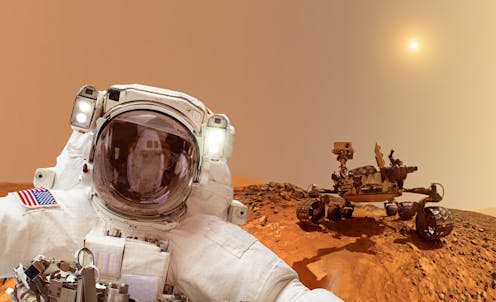
As we contemplate going to the Moon or Mars there’s a rising debate as to whether it worth spending billions to send humans to other planets if a robot or rover can perform the necessary science and get the answers we need.
I think we need to send both. Let me explain why.
I started off my 28-year career at NASA as an engineer on the shuttle training aircraft – an airborne simulator of the space shuttle. During my 17 years as an astronaut, I flew on three space missions. Two of those were shuttle missions, STS-117 and STS-119, to the International Space Station.
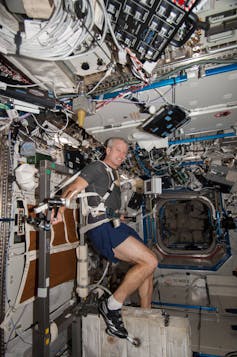
The main goal of both of these missions was to build the ISS, leaving little time for actual experiments. However, our mission was fulfilling because we were building the ISS to create a science laboratory in space. My third mission, ISS Expedition 39 and 40 I spent five and a half months on the ISS.
While we were on board, more than 300 different experiments were performed. However, my crew mates and I did not interact with all of these. Some we did not touch, like the alpha magnetic spectrometer, which is scanning the universe for antimatter. Others we set up and the mission controls then took over. For other experiments we set them up and performed the experiment. And in some, my crew mates and I were the test subjects. Hence, we used our time to squeeze the most science out of our ISS visit by collaborating with the scientists on the ground. Through this approach, NASA could increase the amount of science being conducted on the ISS.
Apollo 17 vs Curiosity
To try to compare scientific output between a crewed and a robotic mission, let me contrast the Apollo 17 – the last moon mission, launched in December 1972, and in which Gene Cernan and Harrison Schmitt spent 75 hours on the lunar surface – with the Mars Curiosity rover with respect to three variables: distance traveled, cost and soil samples taken. While these two missions are distinctly different – the former being lunar and the latter on Mars – there are similarities that help us compare their productivity.
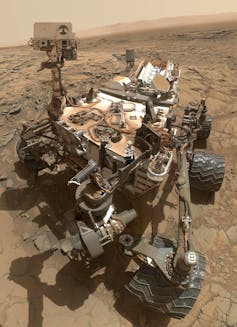
When it comes to distance the humans won. The two Apollo 17 astronauts drove a distance of 35 kilometers on the moon in the span of three days – that’s approximately 11.6 kilometers per day. As of February 2019, Curiosity had traveled 20.16 kilometers on Mars - an average of nine meters per day since it began its journey on Mars in August 2012.
Now I’m not knocking Curiosity or its team. But executing a task is extremely difficult when dealing with a rover 55 to 400 million kilometers, depending upon Earth and Mars relative positions in their orbits. The team on Earth cannot make a mistake because it could jeopardize or even end the mission. Hence, they have to make ever move slowly and verify every step. That means that something a human could accomplish in a couple of hours - like taking multiple rock samples - make take a robot weeks.
During Apollo 17 the astronauts collected 741 rock and soil samples – including a deep-drill core sample three meters long. This amounts to 247 samples each day. I had some difficulty finding the equivalent information for Curiosity. What I did discover was that as of Jan. 15, 2019, Curiosity had drilled 19 sites. And taken two samples without drilling. So Curiosity has taken approximately 30 more like 20 soil samples while on Mars. That is, on average, 0.013 soil samples per day - which shows how difficult it is to operate a piece of machinery remotely. When equipment such as a drill malfunctions, there is nobody there to repair it.
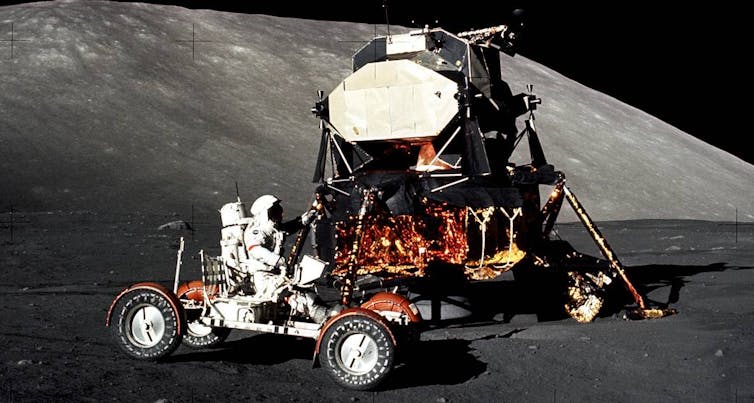
Cost of Apollo vs Curiosity
In 2015 dollars each of the seven lunar Apollo missions cost about $20 billion. The cost of Curiosity was about $2.5 billion in 2015.
Yes, I am comparing a lunar mission to a Mars mission, which isn’t exactly fair. So, let’s use an estimate of what a human mission to Mars is expected to cost - the number ranges from around $100 billion to $500 billion a mission. I imagine it is going to be closer to the $500 billion or more given that the ISS cost more than $100 billion ref.
If we assume $500 billion per mission – a figure that would hopefully decrease with multiple missions – then a manned mission would produce a better return on the investment. From the ballpark estimates above, we can say a crew of four would be at least 500 times more productive in performing science than a rover, although the cost would be about 200 times greater.
Space exploration needs both
Now I admit there is a large margin of error in these quick calculations. However, I’m trying to underscore that science benefits from human involvement. Consequently, I think the most cost-effective solution is to combine both together. This is how we boosted science output on the ISS.
Hence, for Mars, we could have teams at mission controls around the world running the experiments using rovers as they do now – but the teams could do the science much more quickly. That’s because there would always be a human nearby to help out if the rover got stuck or malfunctioned. The astronauts could also handle the work that is easier to do with humans.
Yes, it is more expensive to send humans to space than probes and rovers, but the scientific return on investment can be much greater when humans are involved. We can’t disregard the fact that the human ability to adapt to different situations and to repair and modify equipment increases the probability of mission success.
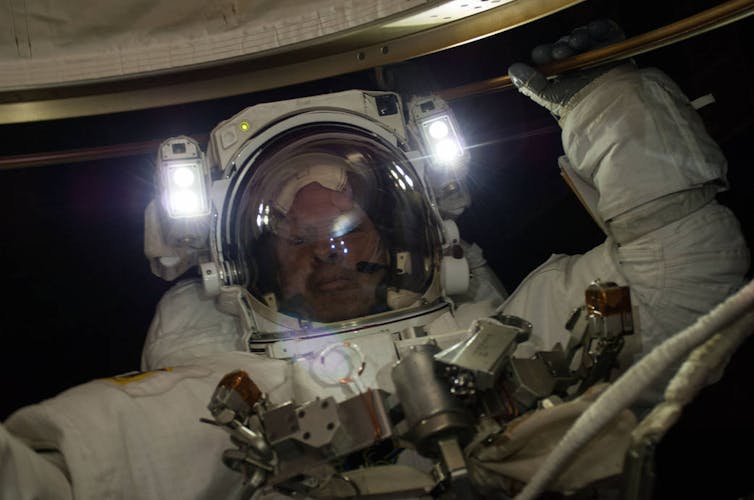
A human perspective
There is also so much we can learn about a new world that sensors just can’t tell us. What does it feel like? Look like? Smell like? This is how most people on Earth will relate to space exploration. So having this human perspective is vital for generating enthusiasm. I agree the rovers on Mars have done wonders to get people excited about planetary exploration, but I’m sure the excitement of humans going to Mars would be much greater.
For example, one of the first questions I get from people when we talk about space is simply, “What was it like?” And they wanted to know about all the details, from brushing your teeth to doing a spacewalk. I would always add that we never knew how our day was going, because most of our tasks, be it science or maintenance, ran into problems that needed resolving.
Our human presence gave the scientists and our mission control teams the ability to adapt the procedures to make each task successful on the ISS. It would have taken the ground teams much longer and cost a lot more to guarantee that everything would work without human intervention. But they knew we were there to help them.
Steve Swanson does not work for, consult, own shares in or receive funding from any company or organization that would benefit from this article, and has disclosed no relevant affiliations beyond their academic appointment.
Read These Next
Caring for older Americans’ teeth and gums is essential, but Medicare generally doesn’t cover that c
There is ample evidence that poor oral health plays a role in many chronic diseases.
Billions of cicadas are about to emerge from underground in a rare double-brood convergence
The last time that these two groups of cicadas emerged from underground together, Thomas Jefferson was…
AI chatbots refuse to produce ‘controversial’ output − why that’s a free speech problem
AI chatbot makers’ restrictive use policies hinder people’s access to information.




